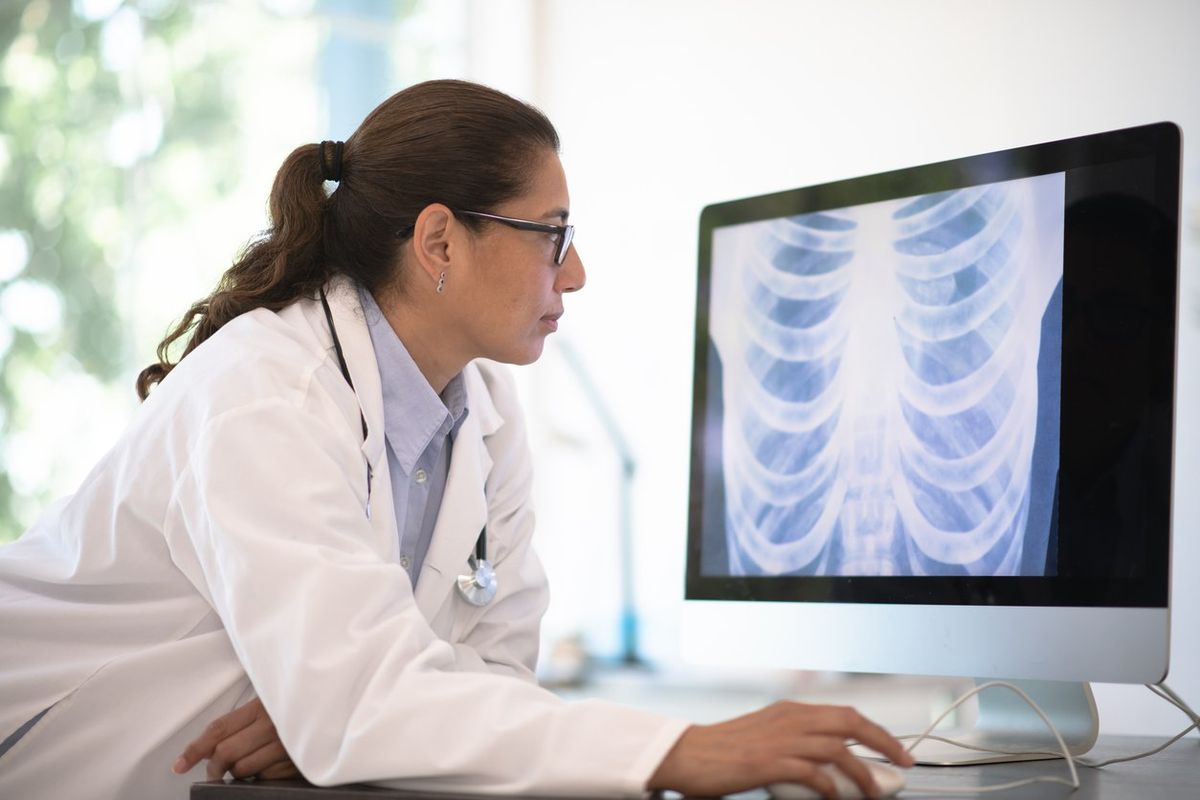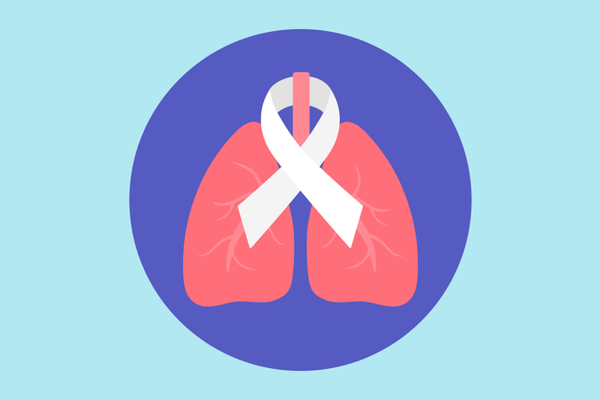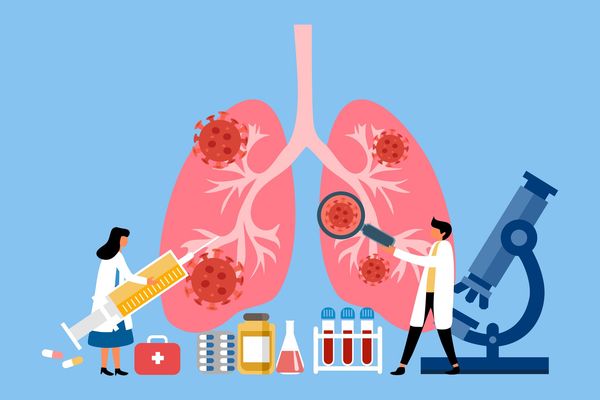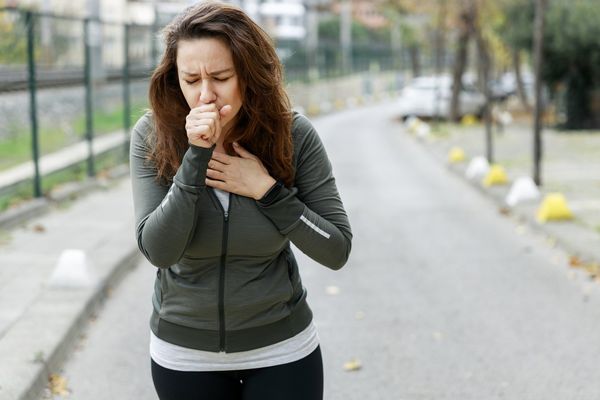In the United States,
lung cancer is the main cause of cancer deaths in people of all genders.
In the past, lung cancer was often thought of as a male smoker’s disease because men smoke at higher rates than women, and smoking is the leading risk factor for lung cancer. But according to research, women who smoke have higher chances of getting lung cancer and with less cigarette exposure than men who smoke, and no one is sure why.
There ’s some thought that genes and biological susceptibility might play a role. In other words, simply being female can increase your risk of getting lung cancer.
It’s also important to understand that the rates of lung cancer are increasing in non-smokers.
Here, we’ll talk about lung cancer screening guidelines, what they mean and how you can best protect yourself.
What are the symptoms of lung cancer?
If you have lung cancer, you might experience things like:
- A cough that doesn't get better
- Coughing up blood
- A hoarse voice
- Not feeling hungry
- Losing weight without trying
- Feeling like you can't catch your breath
- Fatigue
- Wheezing
- Getting lung infections, such as pneumonia or bronchitis, that keep coming back
These symptoms can also point to other health conditions, so it doesn't mean you definitely have lung cancer if you have these symptoms. But if you aren't feeling well or have symptoms that aren't getting better, talk with your healthcare provider for further evaluation.
What are the lung cancer screening guidelines?
The U.S. Preventive Services Task Force (USPSTF) recommends screening if you meet all the following guidelines:
- You're between ages 50 and 80
- You have a smoking history of 20 pack years or more
- You're either currently smoking or quit within the past 15 years
What is a pack year? It's a measurement of how much someone has smoked over a period of time. To know your pack year, multiply the number of cigarette packs you've smoked per day by the number of years you've smoked. So one pack a day for 20 years or two packs a day for 10 years are both 20 pack years.
The American Cancer Society (ACS) recommends similar screening guidelines as USPSTF but recently updated their guidelines to take away the 15-year requirement. According to ACS, yearly screening is important no matter how many years it's been since you've quit smoking.
How is lung cancer screened for?
In the past, screening for lung cancer was done using a chest X-ray, which takes a picture of the bones and organs of the chest. But now, research has shown that screening using low-dose computed tomography (LDCT) is more effective.
An LDCT uses small amounts of radiation to take detailed pictures of the chest using an X-ray machine. These pictures are taken in a spiral path around the body, which is why this procedure is also called a spiral scan.
The National Lung Screening Trial looked at people between the ages of 55 and 74 who had smoked one pack of cigarettes a day for at least 30 years. The study participants were either currently smoking or had quit within the last 15 years. Researchers used either chest X-rays or LDCT scans to screen for lung cancer. They found that using LDCT scans annually for three years revealed lung cancer in its early stages better than chest X-rays. These scans also lowered the risk of dying from lung cancer in current and past heavy smokers.
Should non-smokers get screened?
The Centers for Disease Control and Prevention (CDC) say up to 1 in 5 people in the U.S. who've never smoked still get lung cancer.
Despite this, the USPSTF only recommends lung cancer screening for those who are at high risk: those who are 50 years and older, and smoke or have smoked. This is because the possible harms of screening, such as additional testing for false alarms, can outweigh the minimal benefit of finding early cancer in this group.
The American Lung Association says there isn't enough evidence to say if screening tools would be useful for those who are non-smokers. But research is always changing and so are screening guidelines.
Will insurance cover lung cancer screening?
In 2022, Medicare expanded its coverage screening for those who are ages 50 to 77 and have a 20-pack-year smoking history, and currently smoke or have quit within the last 15 years. You also have to have no signs or symptoms of lung cancer.
Most private insurance plans and Medicaid expansion plans are required to follow the new 2022 guidelines as well. Check with your individual insurance plan to find out if you're eligible. You shouldn't have to pay for any screening as long as you meet the criteria, but your insurance may tell you what facilities you can go to for screening.
This educational resource was created with support from Merck.
- Lung Cancer Hub - HealthyWomen ›
- The Struggle Is Real: Black Women and Lung Cancer ›
- Preventive Health Screenings for Women ›
- Early Screening for Lung Cancer Can Be a Lifesaver ›
- I’m a Non-Smoker with Stage 4 Lung Cancer - HealthyWomen ›
- Nunca fumé pero tengo cáncer pulmonar de etapa 4 - HealthyWomen ›
- Why Are More Non-Smokers Getting Lung Cancer? - HealthyWomen ›
- ¿Por qué personas que no fuman están desarrollando cáncer pulmonar? - HealthyWomen ›
- Kate Walsh Wants You to Get Screened for Cancer - HealthyWomen ›
- Symptoms of Lung Cancer - HealthyWomen ›
- Los síntomas de cáncer pulmonar - HealthyWomen ›
- How to Quit Smoking - HealthyWomen ›




